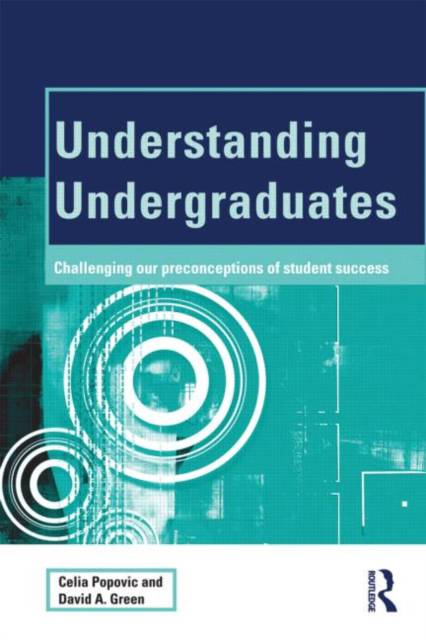
- Retrait gratuit dans votre magasin Club
- 7.000.000 titres dans notre catalogue
- Payer en toute sécurité
- Toujours un magasin près de chez vous
- Retrait gratuit dans votre magasin Club
- 7.000.0000 titres dans notre catalogue
- Payer en toute sécurité
- Toujours un magasin près de chez vous
Understanding Undergraduates
Challenging Our Preconceptions of Student Success
Celia Popovic, David A GreenDescription
Most university teachers have ideas about the typical good or not-so-good student in their classes, but rarely do they share these thoughts with others. By keeping quiet about the preconceptions - or stereotypes - they harbour, teachers put themselves at risk of missing key evidence to help them revise their beliefs; more importantly, they may fail to notice students in real need of their support and encouragement.
In this unique work, the authors explore UK and US university teachers' beliefs about their students' performance and reveal which beliefs are well-founded, which are mistaken, which mask other underlying factors, and what they can do about them. So is it true, for instance, that British Asian students find medicine more difficult than their white counterparts, or that American students with sports scholarships take their studies less seriously? Is it the case that students who sit at the front of the lecture hall get better grades than those who sit at the back?
By comparing students' demographic data and their actual performance with their teachers' expectations, the authors expose a complex picture of multiple factors affecting performance. They also contrast students' comments about their own study habits with their views on what makes a good learner. For each preconception, they offer clear advice on how university teachers can redesign their courses, introduce new activities and assignments and communicate effective learning strategies that students will be able to put into practice. Finally, the authors explore the ramifications of teachers' beliefs and suggest actions that can be taken at the level of the institution, department or programme and in educational development events, designed to level the playing field so that students have a more equitable chance of success.
Ideal for both educational developers and university teachers, this book:
- reveals general tendencies and findings that will inform developers' own work with university teachers,
- provides practical guidance and solutions for university teachers to be able to identify and address students' actual - rather than assumed - needs,
- explores means of addressing and challenging people's natural tendency to rely on preconceived ideas and stereotypes, and
- explains an action research method that educational developers can use on their own campuses to unravel some of the local preconceptions that may be hampering student success.
Spécifications
Parties prenantes
- Auteur(s) :
- Editeur:
Contenu
- Nombre de pages :
- 278
- Langue:
- Anglais
- Collection :
Caractéristiques
- EAN:
- 9780415667555
- Date de parution :
- 21-03-12
- Format:
- Livre broché
- Format numérique:
- Trade paperback (VS)
- Dimensions :
- 155 mm x 231 mm
- Poids :
- 430 g

Les avis
Nous publions uniquement les avis qui respectent les conditions requises. Consultez nos conditions pour les avis.






